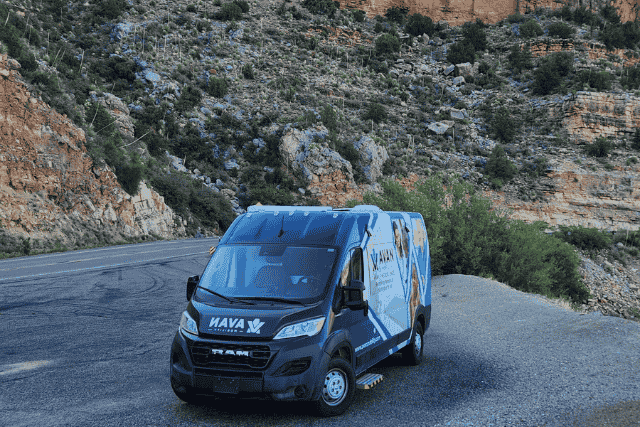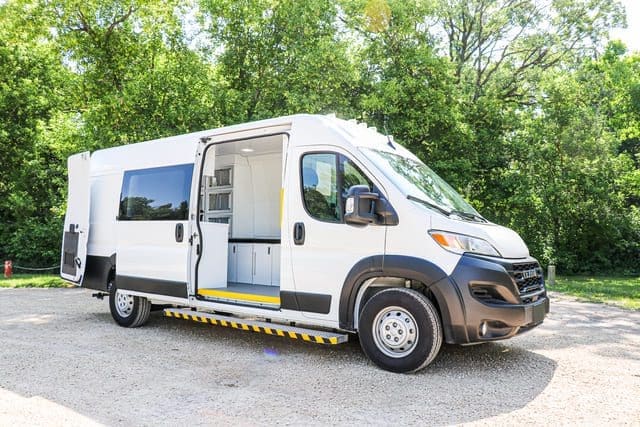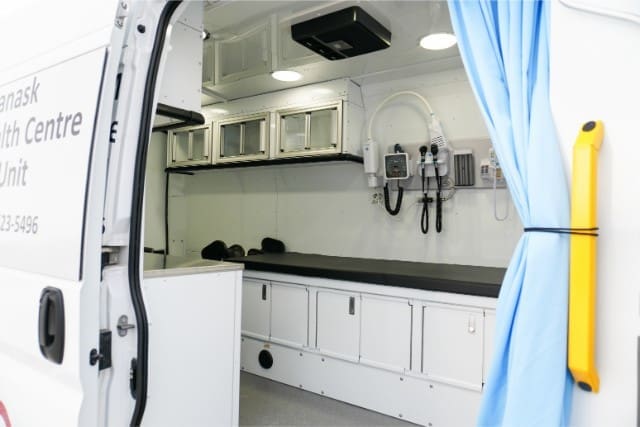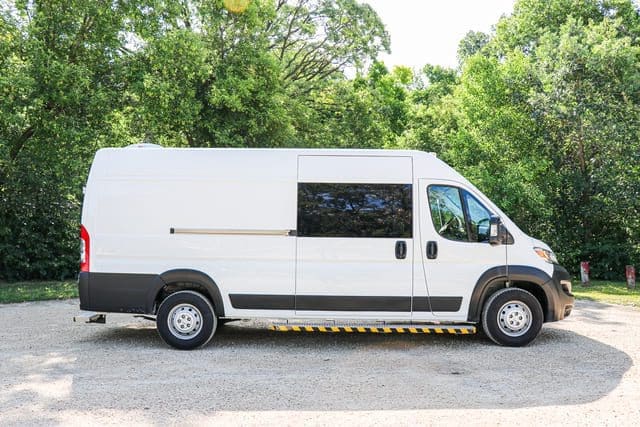How much tribal opioid settlement funding is still sitting untouched in 2025? According to national data, around $665 million is being distributed to tribal nations, with payments rolling out until 2038. But a large amount of it is still unspent.
That delay has real consequences. Healthcare gets postponed. People get missed. And lives are put at risk. If you help lead a tribal health program in places like Arizona or New Mexico, this probably feels familiar. Long drives, too few clinics, and too many barriers stand in the way of getting care where it’s needed.
You’re trying to make the most of what you’ve got. But figuring out how to use these funds can feel like navigating a maze. The longer it sits, the wider the gap gets. Investing in something like a mobile medical unit can change that fast. It brings care to the people, before things spiral.
I’m Russ Evans, and I work with AVAN Mobility. I’ve spent years helping tribal programs like yours deliver care to their communities. With my emergency response background, I care deeply about stopping preventable emergencies. We build mobile medical units, but this article is here to give you honest answers, not a sales pitch.
Here’s what you’ll learn:
- How much tribal opioid settlement funding is still unused in 2025
- Why it remains untouched in some areas
- What tribal funding can be used for
What is tribal opioid settlement funding?
Tribal opioid settlement funding comes from legal settlements between tribal nations and the companies that fueled the opioid crisis. After years of pushing for accountability, tribal communities reached agreements with drug manufacturers and distributors for the harm caused.
This funding isn’t a handout, it’s compensation for real damage. The opioid crisis hit Native communities hard, and this is a step toward healing.
Here’s what you need to know:
- Where it comes from: Legal settlements with companies that contributed to the opioid epidemic.
- Why it matters: The crisis deeply impacted tribal families, communities, and health systems.
- Who receives it: Each tribal nation signs its own agreement and receives its own payments.
- How it’s paid out: Most tribes are getting yearly payments over a span of 15 years.
The idea is to help repair some of the long-term harm. The timeline creates room for thoughtful planning, but it also adds pressure to make smart decisions along the way.
The takeaway: The money is real, it’s already flowing, and it’s meant to support real change. But knowing how to move forward with it? That’s where it can get tricky.
Click the link below to learn about CalOptima, an organization we worked with that is providing healthcare and support for those dealing with opioid addiction.
How much tribal opioid settlement funding is still unused in 2025?
Let’s get to the big question: How much tribal opioid settlement funding is still sitting unused in 2025?
Short answer? A lot. Longer answer? Let me break it down for you in a way that makes sense, without all the legal jargon.
What was promised to tribal communities?
First off, this funding didn’t come out of nowhere. It’s the result of legal settlements with big drug companies that played a part in the opioid crisis. Tribal nations stood up, demanded justice, and won.
Here’s how the numbers shake out:
- About $665 million is being paid out to tribal nations across the U.S.
- That includes $515 million from major drug distributors
- Plus $150 million from Johnson & Johnson
- Payments are happening in chunks, with some happening yearly, and some over six or more years
- This money is only for tribal communities
That’s a huge win. But here’s the thing…
A big chunk of the tribal opioid settlement funding still hasn’t been used
In early 2025, a report came out that showed 44.5% of tribal organizations hadn’t spent or planned how to use their funds yet. That’s almost half.
Here’s what that means:
- In 2024, just under $2 million in funding was given out
- Almost $888,000 of that is still sitting unused
- And that’s only for one year
- If this trend keeps going, hundreds of millions of dollars could go unspent over time
That’s funding that could’ve already been helping your community. Funding you still have access to.
Why are tribal organizations hitting pause on applying for funding?
Look, I get it. Using this money isn’t as simple as swiping a debit card. There’s a reason almost half of all tribes that received money by 2025 hadn’t touched it yet.
You might feel stuck right now, and you’re not alone in that.
Here’s what I’ve heard from tribal health leaders across the country:
- “We don’t know the best way to use it.”
Do you build a new clinic? Do you hire more staff? Do you invest in mental health or addiction care? It’s a big decision, and no one wants to waste it on something that doesn’t make a real impact.
- “We’re short on time and people.”
Planning takes time. And if your team is already stretched thin, figuring out how to use the funding becomes another thing on an already full plate.
- “We’re afraid of getting it wrong.”
There’s pressure to get it right. If you don’t follow the rules, you could lose access to future payments. That risk makes people freeze.
- “We want to make sure it’s what our community actually needs.”
That means more meetings, more input, more coordination. And again, more time.
All of that adds up. So the money sits. And while it does, the same issues continue. People can’t get to appointments, addiction services stay out of reach, and ERs stay overloaded.
The longer you wait, the bigger that gap becomes. And you don’t have to go it alone. There are ways to use this funding that don’t require massive infrastructure or years of planning.
What does this mean for your tribe?
If you’re in Arizona, New Mexico, or anywhere else in the U.S., and you haven’t used your opioid settlement funds yet, you’re not alone.
But here’s the good news:
- You still have time.
- You can still plan.
- You can still make an impact.
And if you’re looking for ways to reach people where they are, to bring care into the community instead of waiting for folks to show up, you’ve got options. Real, mobile options. That’s what I’ll walk through next.
What can tribal opioid settlement funding be used for?
So, you’ve got access to tribal opioid settlement funding, but what can you actually do with it?
That’s where things finally get exciting. Because these funds were made for real, on-the-ground solutions. Programs, tools, and services that meet people where they are.
In the next few sections, I’ll walk through a few smart, approved ways to use your funding to create real impact in your community. These solutions are so valuable because they address a lot of the barriers that tribal organizations face. Let’s start with one of the most effective tools I’ve seen.
Mobile Counseling Unit: Mental and behavioral health support that comes to your people
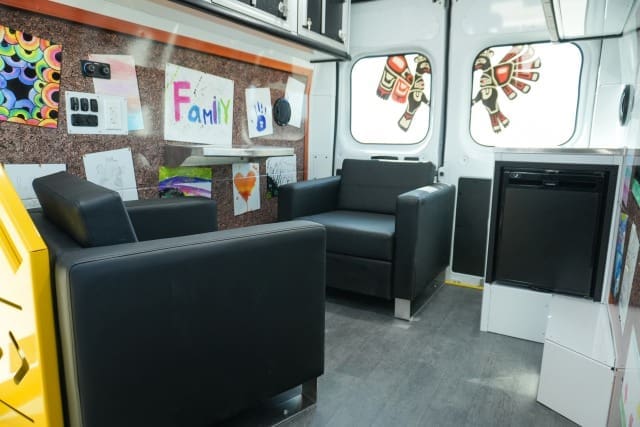
One of the most effective ways your tribal organization can use tribal opioid settlement funding is to invest in a Mobile Counseling Unit. This is a safe, welcoming space where people can talk about their struggles without judgment.
For many people dealing with opioid addiction, just walking into a clinic is a huge barrier. There’s fear. Shame. Stigma. And in rural areas, there’s also distance.
A Mobile Counseling Unit helps break those barriers down. Here’s how:
- It goes where your people are, such as community events, remote reserves, or parking lots outside grocery stores.
- It feels like a living room, not a cold medical space. Comfortable seating, calming lighting, and privacy.
- It’s staffed with trained counselors, so people can talk one-on-one with someone who understands.
- It builds trust, and people are more likely to open up when they’re in a space that feels safe and familiar.
Imagine this: A young man named Tyler has been struggling with addiction since his injury last year. He doesn’t want to walk into the local health center. There are too many eyes and too much fear behind that environment. But when he sees the Mobile Counseling Van parked at the community center, no one has to know why he’s walking inside. That quiet moment could change everything.
Mobile Clinic: Bring healthcare to people dealing with addiction
Another smart way to use your tribal opioid settlement funding is by investing in a Mobile Clinic. This isn’t a one-size-fits-all vehicle; it’s a flexible medical space on wheels that you can outfit based on your community’s specific needs.
For people dealing with opioid use, there are often health problems that go untreated, such as wounds, infections, liver damage, or chronic illnesses that get worse when care is delayed. A Mobile Clinic helps reach them before things spiral.
Here’s how your clinic-on-wheels can make a difference:
- Provide basic medical care: Wound care, physicals, vaccinations, follow-up visits
- Offer private consultations for physical health, substance use supports, or harm reduction
- Create a safe space to talk about treatment options like Medication-Assisted Treatment (MAT), without pushing anything
Let’s say this: A woman named Mel lives on the outskirts of your community. She’s been avoiding care because she feels judged. But when your mobile clinic parks outside the local food bank, she walks in. She gets her blood pressure checked, gets antibiotics for an infection, and, for the first time, talks to someone about her recovery options.
That’s the power of showing up. The van brings care to people instead of asking them to come find it.
Mobile Outreach Unit: Connect with people before they’re in crisis
Another powerful use of tribal opioid settlement funding is a Mobile Outreach Unit. This unit is designed to build trust and relationships, especially with people who aren’t ready to ask for help yet.
You probably know someone in your community who avoids clinics, doesn’t answer calls, or disappears when outreach teams visit their home. That’s who the Mobile Outreach Unit is for. It’s made to be out in the community, reaching people where they already are, without pressure.
Here’s what makes this unit so valuable:
- Meet people on their terms, like at parks, shelters, busy intersections, anywhere
- Hand out supplies like naloxone kits, clean socks, food, or hygiene items
- Start the conversation with no judgment, just “we’re here if you need us.”
- Partner with crisis teams to de-escalate situations and connect people with services
Picture this: Your outreach team parks near a riverbank where people camp. A staff member chats with a man named Ray, who’s been using opioids and sleeping rough for months. He’s not ready to get clean, but he takes a hygiene kit, a warm sandwich, and says he’ll stop by again next week.
Sometimes, that’s where healing begins.
Check out the video below to learn about the cost ranges of these mobile medical units.
How do you apply for tribal opioid settlement funding in 2025?
If your tribal organization hasn’t used any tribal opioid settlement funding yet, that’s okay, you’re not behind. But the sooner you apply, the sooner those funds can start working in your community. Here’s how to do it, step by step.
Step 1: Join the settlements
First, your tribe has to sign on to each settlement officially. Yes, even if you didn’t sue. Every federally recognized tribe is eligible.
To get started:
- Visit the Tribal Opioid Settlements portal
- Download and complete a Tribal Participation Form for each settlement (Distributors, Johnson & Johnson, Teva, Walgreens, CVS, etc.)
- Submit the forms either online through the portal or by email, mail, or fax
- Make sure an authorized tribal representative signs the forms
All the forms and instructions are available on the Documents page
Step 2: File your annual use report
Once your tribe receives money, you need to show how you plan to use it, or how you’ve already spent it. This is done through a Tribal Abatement Use Report.
Each year:
- Log into the settlement portal
- Submit the use report by January 31
- You can report spending, planning, or a mix of both
In early 2025, 339 tribes filed their reports, but 151 (around 44.5%) hadn’t planned or spent their funding, which paused their future payments. You can see that full breakdown in the official 2025 report once it becomes available.
Why this matters
- If you don’t sign up, your tribe doesn’t receive any funds
- If you don’t file the report, your future payments will be paused
- But if you do both, your tribe becomes eligible for yearly funding, giving you time to build programs that actually work
Turn unused tribal opioid settlement funding into real impact
If you’re reading this, chances are you’ve been wondering how much tribal opioid settlement funding is still unused in 2025 and what your tribal organization can actually do about it. Maybe you’ve been sitting on funding with no clear plan, or maybe you didn’t even know you were eligible in the first place. Either way, you came here looking for answers.
Here’s what you now know:
- Millions in tribal funding is still untouched across the U.S.
- There are multiple ways to use that funding, like mobile clinics, outreach vans, and counseling units
- Applying for funding is a two-step process that’s totally doable
At AVAN Mobility, we build solutions that help tribal communities like yours reach people who often get left behind. With over a decade of experience, we’ve worked alongside tribal health leaders, addiction support teams, and outreach programs across the country. We understand the funding challenges, the remote geography, the trust gaps, and the urgency. Our role is to help you close those gaps by turning unused funding into services that meet your people where they are.
If you’re ready to talk through ideas or ask questions, click the button below to speak with one of our mobility experts. We’re here to help.
Not ready to connect just yet? That’s fine, feel free to keep learning. Here are a few next articles we recommend to help you move forward:
1. A guide on warranty coverage for mobile health vans: Learn all about the warranty package that comes with your mobile medical unit.
2. What does a day look like? Prepare for your Discovery Call with AVAN: This article will help you get a better idea of what your Discovery Call with our mobility experts involves.
